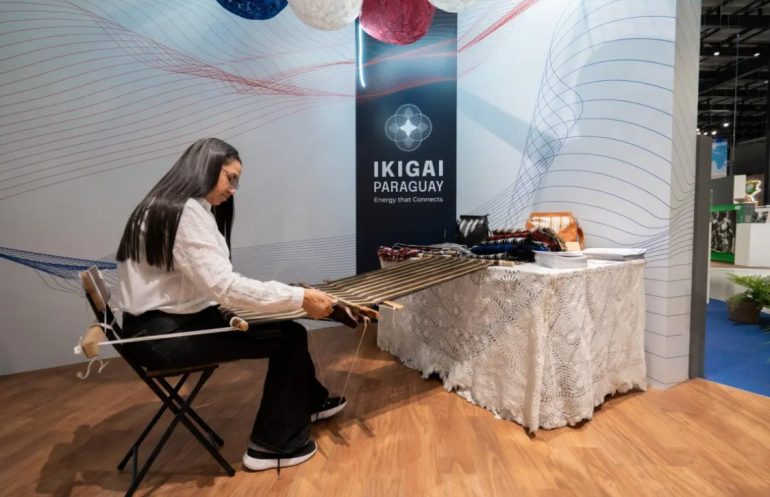Visitors to the Osaka Expo 2025 in Japan are in for a treat as they get a rare glimpse of a Paraguayan gem: the intricate crafting of the Para’i Poncho, a UNESCO Intangible Cultural Heritage treasure. At the heart of this display is Rosa Segovia, a Living National Treasure from Paraguay, who is showcasing the meticulous art of weaving this iconic 60-striped poncho in the country’s pavilion.
“I hope they appreciate our work, which is very meticulous,” Segovia shared on the first day of her demonstrations. With only 20 women in Paraguay skilled in the ancestral techniques required to weave the poncho on a manual loom, the craft demands precision and delicate fingers to create the 60 fine rows of thread.
Fighting to keep the skill alive
Segovia, who hails from the historic city of Piribebuy – where the poncho originated – learned the skill from her aunt, and has fought to keep it alive. “It was a battle, a daily struggle to honour the work once again,” she said, recalling how the technique nearly vanished years ago.
In 2019, Paraguay’s National Secretariat of Culture named Segovia a Living National Treasure for her mastery of the craft and her dedication to preserving it. The Para’i Poncho itself gained global recognition in 2023 when UNESCO added it to its Intangible Cultural Heritage list, flagging it for urgent safeguarding.
Para’i Poncho: A living memory
“It is a huge satisfaction,” Segovia said of the honour, noting how it transformed her life. “It completely changed our situation. There were more sales.”
For Segovia, the poncho is more than a garment. It is a living memory. Its 60 stripes commemorate the 60 soldiers executed and buried in a mass grave in Piribebuy during the War of the Triple Alliance in the 19th century.
Recently, also Paraguayan tereré and Ñandutí charmed visitors at Expo 2025 in Osaka.
A dream coming true
Bringing Segovia to Osaka was a dream come true for Paraguay’s ambassador to Japan, Mario Toyotoshi. “We believe that in a country like Japan, which values culture and tradition, her presence will have a very positive impact,” he said.
The idea, sparked early on with Andrea Vázquez, president of the Paraguayan Institute of Crafts, became reality just days before the Expo’s closing ceremony on October 13. “We went all out,” Toyotoshi grinned, describing the effort to coordinate Segovia’s visit.
Cornerstone of Paraguay’s cultural showcase
The Para’i Poncho is a cornerstone of Paraguay’s cultural showcase at the Expo, which has welcomed over 150 countries since opening six months ago. Toyotoshi sees it as a chance to shine a light on Paraguay, a country he says often flies under the radar. “We do not appear much in the news,” he quipped, attributing this to a “lack of problems.”
Yet, he believes Paraguay offers unique economic and social strengths, and he takes personal pride in bridging his native country with Japan, his parents’ homeland. For visitors, the ancient craft of the Para’i Poncho is a rare chance to witness history being woven, thread by thread, by a true guardian of Paraguayan heritage.


